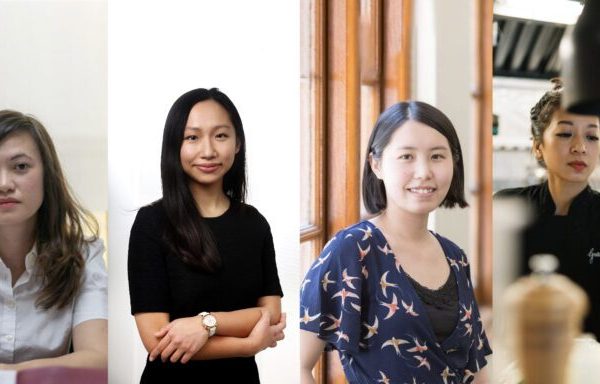The meaning behind LGBT+ terms
Language plays an important role in increasing awareness about sexual and gender minorities, who have been marginalised throughout history and, still today, do not have access to equal rights and protections in Hong Kong.
Just like any other developing situation, LGBT+ terms continue to evolve alongside society’s understanding of sexual and gender identity issues. For example, umbrella terms have taken many iterations over the past few decades, expanding from the original ‘LGB’ (which first emerged in the US in the 1980s) to ‘LGBT’ in the 1990s, then LGBTQ, LGBTQI, LGBT+ and TGNC/TGNCNB, among others.
At the same time, the LGBT+ community has introduced a range of more specific language, which better reflects the nuances of identity. To help improve awareness and communication, we have created this glossary of essential terms:
Umbrella Terms
Ally
Typically a cisgender person who supports and respects the LGBT+ community.
Gender Diverse
An umbrella term describing gender identity, expression, or perception which does not conform to norms and stereotypes.
Heteronormativity
The assumption that the norm is to be heterosexual and cisgender.
LGBT+
An abbreviation for ‘Lesbian, Gay, Bisexual and Transgender’ first introduced in the 1990s in the US. With growing awareness of the gender and sexuality spectrum, new terms have been added to the LGBT acronym, such as ‘LGBT+’, ‘LGBTQIA’, ‘LGBTQQIAAP’, ‘LGBTIQAPD’ and ‘LGBTQ2S+’:
Q – Stands for ‘queer’
Q – Stand for ‘questioning’
I – Stands for ‘intersex’
A – Stands for ‘ally’
A – Stands for ‘asexual’
P – Stands for ‘pansexual’
D – Stands for ‘demisexual’
2 – Stands for ‘two-spirited’
+ – Stands for those who may not have been included in the previous terms
TGNC/TGNCNB
An abbreviation for ‘transgender and gender nonconforming’, with the additional ‘NB’ for ‘non-binary’ identities.
Abbreviation for ‘Queer and Questioning’
Queer
An umbrella term for people who don’t identify as heterosexual and/or cisgender. Historically, the word had a derogatory connotation but it has recently been reclaimed by the LGBT+ community.
SOGIESC
An inclusive abbreviation for ‘Sexual Orientation, Gender Identity, Gender Expression, Sex Characteristics’ often used by NGOs in the context of international human rights.
Sexual Orientation
Asexual
A person who experiences little to no sexual attraction towards others and/or lacks interest in sexual behaviour.
Bicurious
People who may be curious about experiencing attraction towards others of the same sex assigned at birth.
Bisexual
A person who is sexually attracted to both men and women.
Demisexual
A person who experiences sexual attraction only after establishing a strong emotional connection.
Intersex
Umbrella term to describe a person whose genetic, reproductive or hormonal configuration doesn’t fit typical binary notions.
Pansexual
The sexual orientation of a person who is emotionally and sexually attracted to people regardless of gender.
Sex
A person’s biological sex with regards to their reproductive system.
Sexual orientation
Pertains to a person’s sexual attraction towards others. It is a term used to describe one’s pattern of emotional, romantic or sexual attraction.
Gender Identity
Agender
Meaning ‘without gender.’ Refers to individuals who do not identify with any particular gender. Some use ‘agender’ if they identify as gender-neutral or as non-binary.
Androgynous
Masculine and feminine traits combined in the non-traditional way of gender expression.
Bigender
Gender identity where a person identifies as both male and female, either at the same time or at different times.
Cisgender
Those whose gender identity aligns with their sex assigned at birth. Abbreviated as ‘cis’.
Gender
A social construct based on established norms rather than a person’s biological sex. Also refers to an individual’s personal gender identity.
Gender affirmation surgery/Sexual Reassignment Surgery (SRS)
A series of surgeries performed to modify a person’s body so that it more closely corresponds with their gender identity.
Gender binary
The notion that gender is strictly female or male and assigned based on the sex assigned at birth, instead of a spectrum of gender identities and expressions. This is often seen as limiting for individuals who don’t identify under socially constructed categories.
Gender dysphoria
The distress felt by individuals whose gender identity does not correspond with the sex they were assigned at birth.
Genderfluid
A person with different gender identities at different times – be that multiple genders at once, single identities, or no gender at all.
Gender identity
The gender with which a person identifies.
Gender nonconforming
A person whose gender expression is considered inconsistent with the cultural constructs of binary genders; females aren’t ‘feminine’ enough or males aren’t ‘masculine’ enough. A cisgender person can also be gender nonconforming.
Genderqueer
A person who identifies with neither, both, or a combination of male and female genders.
Non-binary
Any gender identity or expression that does not fit within the gender binary.
Pangender
A person whose gender identity comprises many different genders.
Personal Gender Pronouns
Some transgender or non-binary people use pronouns like they/them/theirs, ze/zir/zirs, among others instead of he/she or his/hers. Some people don’t use any pronouns.
Transmasculine
A person assigned female at birth who identifies more with masculinity.
Transgender
Sometimes shortened to “trans”. Describes an individual whose gender identity does not match their assigned sex at birth.
Transman/transgender man
A person who identifies as a male, but was assigned female at birth.
Transwoman/transgender woman
The person identifies as a female, but was assigned male at birth.

